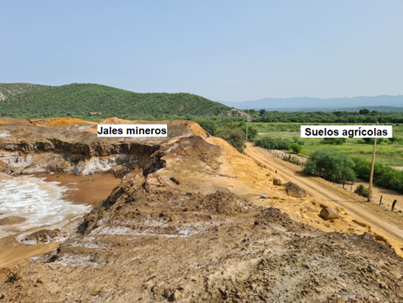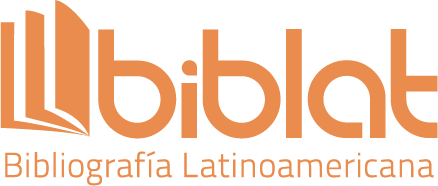Agricultural Soils and Heavy Metals, a Toxic Relationship that can be Remedied
DOI:
https://doi.org/10.36790/epistemus.v16i33.228Keywords:
Agricultural soils, Heavy metals, RemediationAbstract
Soil is an essential component of our planet, mainly because it participates in various processes that make life possible in Earth. One of the most important roles is to provide food, due to more than 95% of the world's food production depend on the soil. However, soil contamination is a constant threat, since soils are not considered as a renewable resource; therefore, it is necessary to remedy them. Heavy metals are a frequent contaminant that endangers the natural balance of soil processes and constitutes a threat to human health. In this regard, there are remediation techniques that seek to remove and immobilize them. Some of these techniques are the biological and physicochemical ones, which use plants (phytoremediation), and others use thermal treatments (thermal desorption), respectively.
Downloads
References
G. Sposito, The chemistry of soils. 2nd ed. New York: Oxford University Press, 2008. ISBN: 978-0-19-531369-7
"All definitions, FAO SOILS PORTAL, Food and Agriculture Organization of the United Nations". https://www.fao.org/soils-portal/about/all-definitions/en/ (accedido el 6 de junio de 2022).
A.P. Eldor, Soil microbiology, ecology, and biochemistry. 4th ed. Amsterdam: Academic Press, Elservier inc., 2015. ISBN: 978-0-12-415955-6
H. Burbano-Orjuela, “The soil and its relationship with ecosystem servives and food security”, Rev. sci. agric., Vol. 33, no. 2, pp.117-124, December 2016. DOI: 10.22267/rcia.163302.58. DOI: https://doi.org/10.22267/rcia.163302.58
B.J. Alloway, Heavy metals in soils: trace metals and metaloids in soils and their bioavailability. 1st ed. Dordretch: Springer Science & Business Media, 2012. DOI: 10.1007/978-94-007-4470-7. DOI: https://doi.org/10.1007/978-94-007-4470-7_2
S.M. Ghandi y B.C. Sarkar, Geochemical Exploration en Essentials of Mineral Exploration and Evaluation. 1st ed. Amsterdam: Elsevier inc., 2016, pp. 125-158. ISBN: 978-0-12-805332-4. DOI: https://doi.org/10.1016/B978-0-12-805329-4.00013-2
R. Nieder, D.K. Benbi y F.X. Reichl, Role of Potentially Toxic Elements in Soils en Soil Components and Human Health, 1st ed. Dordrecht: Springer Science & Business Media, 2018, pp. 375-450. DOI: 10.1007/978-94-024-1222-2. DOI: https://doi.org/10.1007/978-94-024-1222-2_8
J.D. Mahecha-Pulido, J.M. Trujillo-González y M.A. Torres-Mora, 2015, “Contenido de metales pesados en suelos agrícolas de la región in the meta departmet”, ORINOQUIA, vol. 19, no. 1, pp. 118-122. DOI: https://doi.org/10.22579/20112629.345
L. Lianwen, L. Wi, S. Weiping, G. Mingxin, 2018, “Remediation techniques for heavy metal-contaminated soils: Principles and applicability”, Sci. Total Environ., vol. 633, no. 1, pp. 206-219. DOI: 10.1016/j.scitotenv.2018.03.161. DOI: https://doi.org/10.1016/j.scitotenv.2018.03.161
N. Siebers y Peter Leinweber, 2013, “Bone Char: A Clean and Renewable Phosphorous Fertilizer with Cadmium Immobilization Capability”, J. Environ. Qual., vol. 42, no. 1, pp. 405-411. DOI: 10.2134/jeq2012.0363. DOI: https://doi.org/10.2134/jeq2012.0363

Downloads
Published
How to Cite
Issue
Section
License
Copyright (c) 2022 EPISTEMUS

This work is licensed under a Creative Commons Attribution-NonCommercial-ShareAlike 4.0 International License.
The magazine acquires the patrimonial rights of the articles only for diffusion without any purpose of profit, without diminishing the own rights of authorship.
The authors are the legitimate owners of the intellectual property rights of their respective articles, and in such quality, by sending their texts they express their desire to collaborate with the Epistemus Magazine, published biannually by the University of Sonora.
Therefore, freely, voluntarily and free of charge, once accepted the article for publication, they give their rights to the University of Sonora for the University of Sonora to edit, publish, distribute and make available through intranets, Internet or CD said work, without any limitation of form or time, as long as it is non-profit and with the express obligation to respect and mention the credit that corresponds to the authors in any use that is made of it.
It is understood that this authorization is not an assignment or transmission of any of your economic rights in favor of the said institution. The University of Sonora guarantees the right to reproduce the contribution by any means in which you are the author, subject to the credit being granted corresponding to the original publication of the contribution in Epistemus.
Unless otherwise indicated, all the contents of the electronic edition are distributed under a license for use and Creative Commons — Attribution-NonCommercial-ShareAlike 4.0 International — (CC BY-NC-SA 4.0) You can consult here the informative version and the legal text of the license. This circumstance must be expressly stated in this way when necessary.
The names and email addresses entered in this journal will be used exclusively for the purposes established in it and will not be provided to third parties or for their use for other purposes.




























